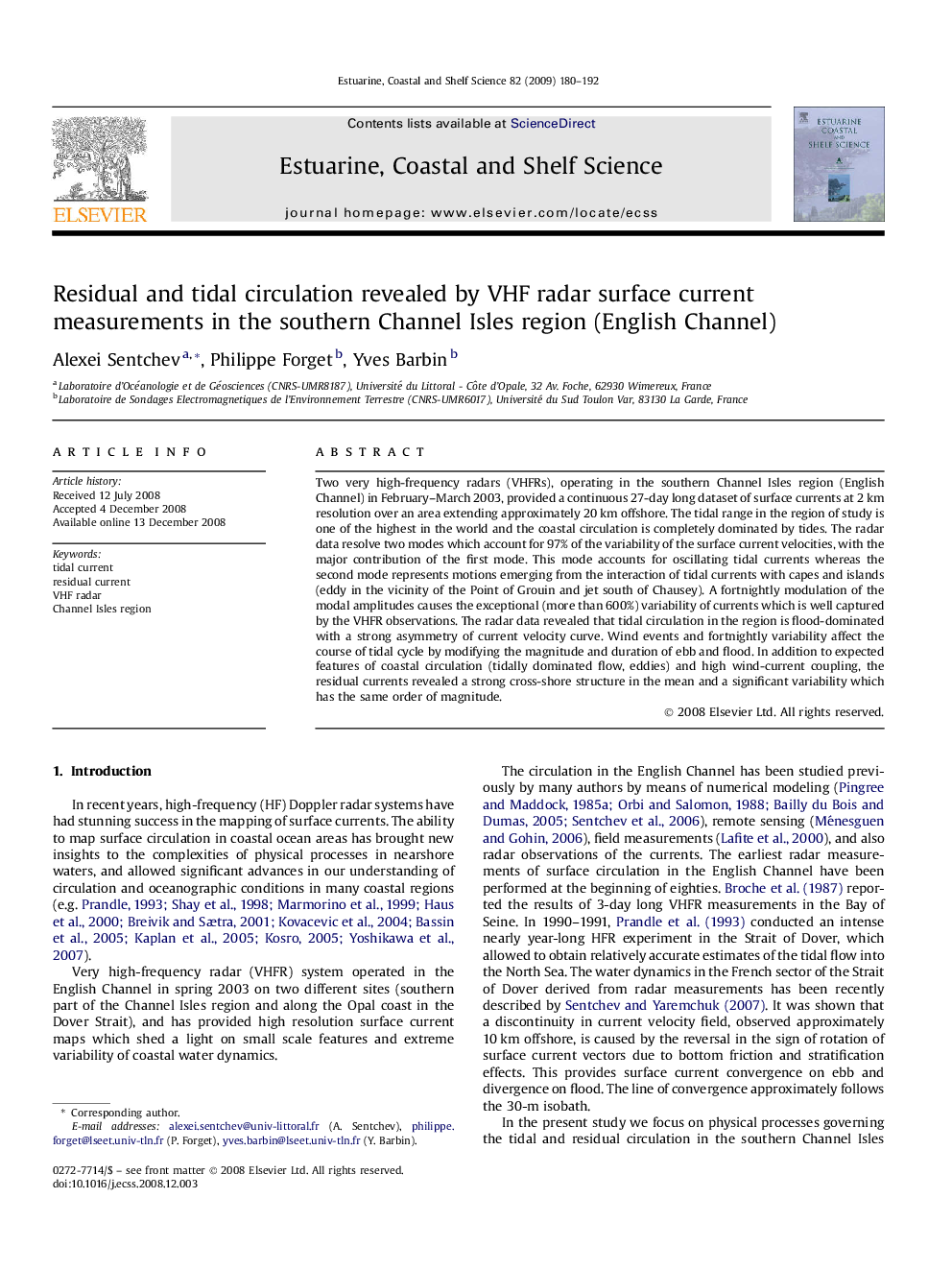| Article ID | Journal | Published Year | Pages | File Type |
|---|---|---|---|---|
| 4541228 | Estuarine, Coastal and Shelf Science | 2009 | 13 Pages |
Two very high-frequency radars (VHFRs), operating in the southern Channel Isles region (English Channel) in February–March 2003, provided a continuous 27-day long dataset of surface currents at 2 km resolution over an area extending approximately 20 km offshore. The tidal range in the region of study is one of the highest in the world and the coastal circulation is completely dominated by tides. The radar data resolve two modes which account for 97% of the variability of the surface current velocities, with the major contribution of the first mode. This mode accounts for oscillating tidal currents whereas the second mode represents motions emerging from the interaction of tidal currents with capes and islands (eddy in the vicinity of the Point of Grouin and jet south of Chausey). A fortnightly modulation of the modal amplitudes causes the exceptional (more than 600%) variability of currents which is well captured by the VHFR observations. The radar data revealed that tidal circulation in the region is flood-dominated with a strong asymmetry of current velocity curve. Wind events and fortnightly variability affect the course of tidal cycle by modifying the magnitude and duration of ebb and flood. In addition to expected features of coastal circulation (tidally dominated flow, eddies) and high wind-current coupling, the residual currents revealed a strong cross-shore structure in the mean and a significant variability which has the same order of magnitude.
